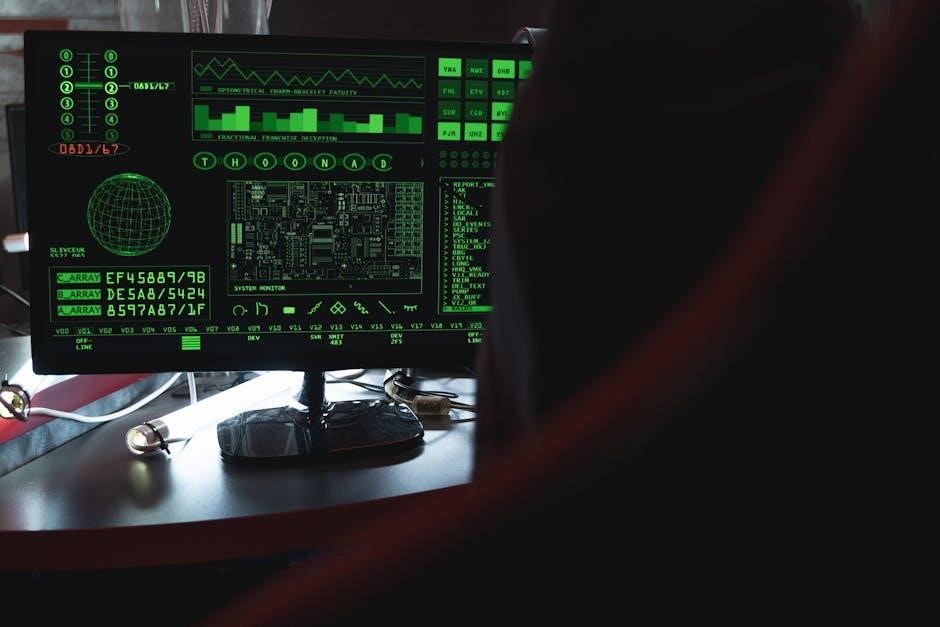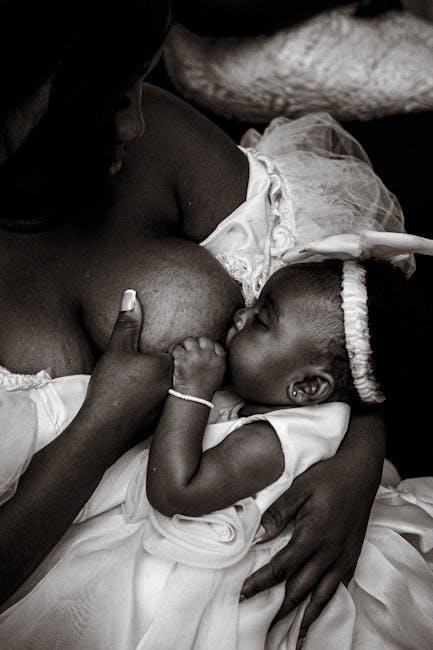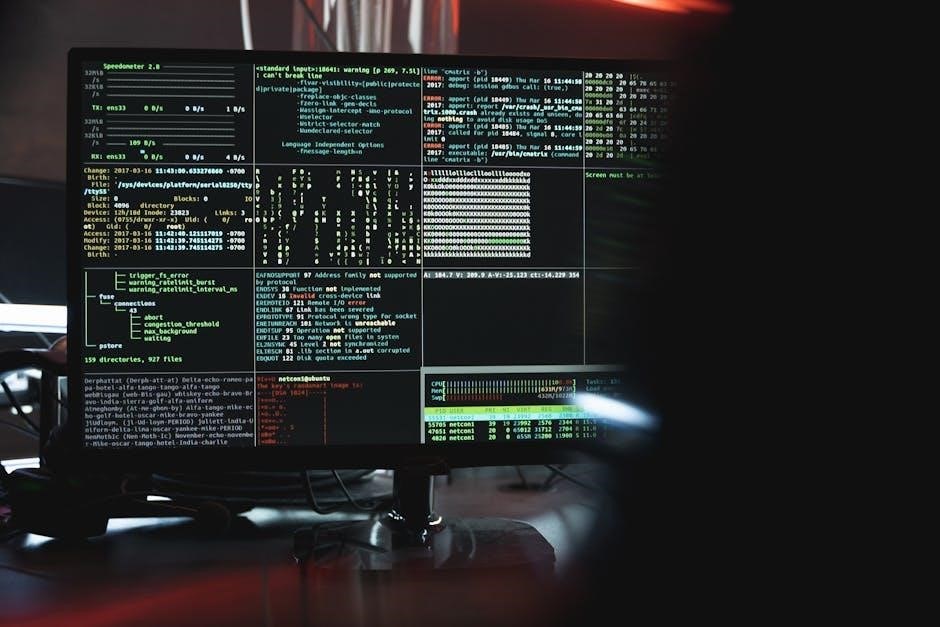CPT codes are essential for accurate billing of ultrasound-guided breast biopsies, ensuring proper reimbursement. Codes like 19083 and 19084 specifically address single and multiple lesion procedures, respectively.
Overview of Breast Biopsy Procedures
Breast biopsy procedures involve removing tissue samples to diagnose breast abnormalities, such as suspicious masses or calcifications. They can be performed surgically or percutaneously, with imaging guidance like ultrasound, mammography, or MRI. Ultrasound-guided biopsies are minimally invasive, using real-time imaging to precisely locate lesions. Core needle biopsies are common, extracting tissue samples for pathological examination. Fine-needle aspiration may also be used for cysts or smaller lesions. These procedures are essential for evaluating breast abnormalities detected during screening or clinical exams. Imaging guidance ensures accurate needle placement, minimizing complications. Post-biopsy care includes applying pressure to prevent bleeding and monitoring for potential side effects. Accurate documentation of the procedure is critical for coding and billing purposes. The choice of biopsy method depends on the lesion’s location, size, and patient-specific factors, ensuring optimal diagnostic outcomes while maintaining patient comfort and safety.
Importance of CPT Coding in Medical Billing
CPT coding is crucial for accurate and efficient medical billing, ensuring proper reimbursement for procedures like ultrasound-guided breast biopsies. These codes standardize procedural descriptions, facilitating consistent billing practices across healthcare providers. For breast biopsies, specific CPT codes such as 19083 and 19084 are used to differentiate between single and multiple lesion procedures, ensuring precise billing. Accurate coding prevents claim denials and delays, while also ensuring healthcare providers receive fair compensation. Additionally, CPT codes support data collection for healthcare analytics, helping track procedure volumes and costs. Proper use of these codes is essential for compliance with payer requirements and maintaining transparency in medical billing processes. By standardizing procedures, CPT codes play a vital role in the financial and operational efficiency of healthcare systems.

CPT Codes for Ultrasound-Guided Breast Biopsy
CPT codes 19083 and 19084 are used for ultrasound-guided breast biopsies, with 19083 for a single lesion and 19084 for each additional lesion, ensuring accurate billing.
CPT Code 19083: Ultrasound-Guided Breast Biopsy for a Single Lesion
CPT code 19083 is specifically designated for an ultrasound-guided breast biopsy of a single lesion. This code applies to procedures where a breast localization device, such as a clip or metallic pellet, is placed under ultrasound guidance. It also includes imaging of the biopsy specimen when performed. The procedure is percutaneous, meaning it is minimally invasive and does not require surgical incision. Code 19083 is used for the initial lesion biopsied and is essential for accurate billing and reimbursement. It is important to note that this code should only be reported once per patient for the first lesion. Additional lesions in the same breast are coded separately using CPT code 19084. Proper documentation of the procedure and medical necessity is required to support the use of this code.
CPT Code 19084: Ultrasound-Guided Breast Biopsy for Each Additional Lesion
CPT code 19084 is used for reporting an ultrasound-guided breast biopsy of each additional lesion beyond the first one in the same breast. This add-on code applies when multiple lesions are biopsied during the same procedure. It includes the placement of breast localization devices (e.g., clips or metallic pellets) and imaging of the biopsy specimen when performed. The procedure is percutaneous, meaning it is minimally invasive. Code 19084 should be reported separately for each additional lesion biopsied after the first one, which is coded using 19083. This ensures accurate billing for the additional time and effort required for multiple biopsies. Proper documentation, including the number of lesions and medical necessity, is essential for correct reimbursement. This code is always billed in conjunction with the primary procedure code, never as a standalone code.

Billing and Coding Guidelines for Ultrasound-Guided Breast Biopsy
Accurate coding requires using CPT codes 19083 and 19084 for single and additional lesions, respectively. Modifier 59 may be used for separate lesions. Proper documentation is essential.
When to Use Modifier 59 for Separate Lesions
Modifier 59 is used to indicate a distinct procedural service when multiple lesions are biopsied during the same session. For ultrasound-guided breast biopsies, it applies when separate lesions require individual procedures. If a patient undergoes a biopsy of one lesion (CPT 19083) and an additional lesion (CPT 19084), Modifier 59 should be appended to the second procedure to avoid payment bundling. This ensures proper reimbursement for each distinct lesion; The modifier is also applicable for bilateral biopsies or when imaging guidance is used for separate lesions. Clear documentation of separate sites or lesions is essential to justify the use of Modifier 59. Always verify CMS guidelines and payer policies for specific requirements.
Reporting Multiple Lesions in the Same Breast
When multiple lesions in the same breast are biopsied using ultrasound guidance, CPT code 19083 is reported for the first lesion, and 19084 is used for each additional lesion. Each lesion should be documented separately to justify the use of multiple codes. For example, if two lesions are biopsied in the same breast, report 19083 for the first and 19084 for the second. Modifier 59 is not typically required for additional lesions in the same breast unless the same modality is used for distinct procedures. Accurate reporting ensures proper reimbursement for the work performed. Always verify documentation to confirm the number of lesions and their locations to avoid coding errors.

Documentation Requirements for Ultrasound-Guided Breast Biopsy
Accurate documentation of medical necessity, imaging guidance, and specimen collection is crucial. Records must include lesion details, ultrasound guidance use, and biopsy outcomes to support coding accuracy.
Medical Necessity and Supporting Documentation
Medical necessity must be clearly documented, supported by diagnostic imaging and clinical findings. The ICD-10 code should reflect the reason for the biopsy, such as a suspicious mass or abnormality. Detailed records must include the number of lesions, their locations, and whether localization devices were placed. Documentation should also specify the use of ultrasound guidance and any imaging performed on the biopsy specimen. Supporting documents, such as the physician’s order, radiology reports, and pathology results, are essential for validating the procedure. Accurate and comprehensive documentation ensures compliance with coding guidelines and supports proper reimbursement. It also helps in establishing the medical rationale for the biopsy, making it a critical component of the billing process.
Imaging and Biopsy Specimen Requirements
Imaging documentation must confirm the placement of localization devices and the collection of biopsy specimens. Ultrasound guidance must be clearly documented, including images capturing the needle placement and specimen collection. The biopsy specimen must be sent for pathological examination, with records detailing the number of samples taken. Imaging of the biopsy site post-procedure may be required to confirm the accuracy of the sampling. Proper labeling and handling of specimens ensure accurate pathological evaluation. Additional imaging, such as a post-biopsy mammogram, may be performed to confirm marker placement but is not separately billable. Detailed documentation of these steps ensures compliance with coding and billing requirements, supporting the medical necessity of the procedure.

Clinical Scenarios and Coding Examples
This section provides examples, such as single lesion biopsies using CPT 19083 and multiple lesions using 19084, guiding accurate coding in various clinical situations.
Example 1: Single Lesion Biopsy
In a scenario where a patient undergoes an ultrasound-guided breast biopsy for a single lesion, CPT code 19083 is reported. This code represents a percutaneous biopsy with ultrasound guidance, including the placement of a localization device (e.g., clip) and imaging of the specimen, if performed. For instance, if a single suspicious mass is identified and biopsied under ultrasound guidance, 19083 is the appropriate code. Documentation must include details of the ultrasound guidance, the single lesion targeted, and any localization device placed. This code ensures accurate billing for the procedure, reflecting the resources and time required for a single-lesion biopsy. Proper coding also supports compliance with medical billing standards and ensures appropriate reimbursement for the service provided.
Example 2: Multiple Lesions in the Same Breast
When a patient undergoes an ultrasound-guided breast biopsy for multiple lesions in the same breast, CPT code 19083 is reported for the first lesion, and 19084 is used for each additional lesion. For example, if two distinct lesions are biopsied under ultrasound guidance, 19083 is billed once for the first lesion, and 19084 is billed once for the second lesion. Modifier 59 may be appended to 19084 to indicate that the additional lesion was a separate and distinct procedure. Documentation must clearly specify the number of lesions and the use of ultrasound guidance for each. Accurate coding ensures proper reimbursement for the additional time and resources required for multiple lesion biopsies. This approach aligns with billing guidelines and avoids underreporting or overreporting of services.




Leave a Reply
You must be logged in to post a comment.